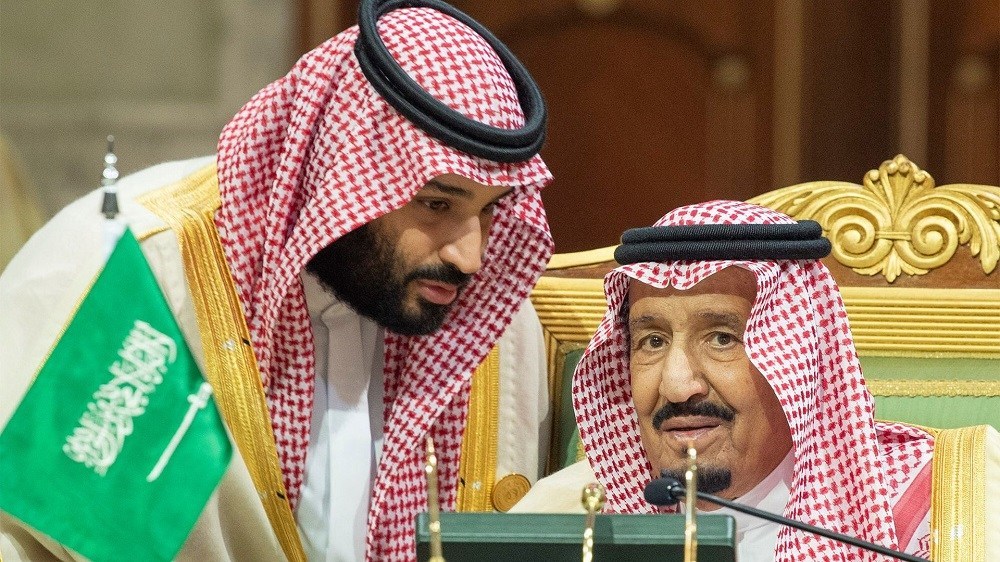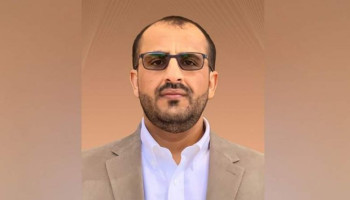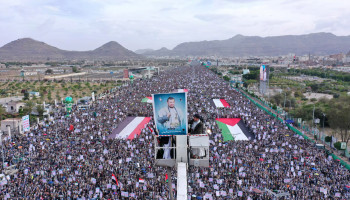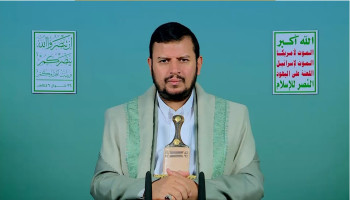Saudi austerity measures: an end to lavish times?
الخميس, 13 أغسطس 2020

The Covid-19 coronavirus pandemic has spread around the world with lightning speed, surprising most governments, and pushing the global economy in deep recession. The collapse of oil prices, hovering just over $40 a barrel, has especially pushed the world's largest crude exporter's economy deeper into the abyss.
Saudi Arabia posted a $29.12 billion deficit, with oil revenues falling 45 percent in the second quarter this year (on a year-on-year basis) to $25.5 billion. Total revenues dropped 49 percent to nearly $36 billion, according to the country's Finance Ministry report published on July 28.
The slump in oil prices, along with the Covid-19 pandemic, has placed a unique pressure on the Saudi economy. In March, Saudi net foreign assets fell by almost $27 billion to $464 billion, the lowest in 19 years. The Ministry of Finance has increased its debt ceiling from 30 percent of GDP to 50 percent, according to Carnegie Institute.
On Friday, Saudi Arabia's health ministry reported 1,567 new Covid-19 cases, along with 1,859 recoveries, taking the total number of cases in the Kingdom to 285,793, and recoveries to 248,948. The death toll has now risen to 3,093.
According to an August 3rd report by MEED (Middle East business intelligence), Covid-19 cases crossed 1.24 million-mark in West Asia and North Africa (MENA) with the six Persian Gulf Cooperation Council (PGCC) member-states accounting for 51.4 percent of all regional infections, with Iran comprising 24.9 percent.
The annual Hajj season took place between July 28 and August 2, was open to just a few thousand people living in Saudi Arabia. Typically, nearly two million Muslims visit Mecca for the annual pilgrimage, a pillar of the Islamic faith. Another 1.8 million come through the year for smaller pilgrims (umrah). Covid-19 related restrictions are creating a gap in what is one of the most important sources of revenue, besides oil for the Saudi Kingdom. Religious tourism typically makes up about 20 percent of the country's non-oil GDP.
Saudi Arabia has implemented harsh price hikes, and a two-pronged crisis roils spending cuts as the Kingdom. Oil revenues represent over 40 percent of Saudi GDP and almost 80 percent of exports, employing two-thirds of the population.
As the country's budget deficit climbed, the Kingdom has taken austerity measures that have not been welcomed by the general population. Saudi Arabia increased VAT from five to 15 percent on July 1, with consumers rushing to the shopping malls to stock up on goods before the price hike. The price of petrol also increased by 34 percent in July, with Gasoline 91 now costing $0.34 per liter, up from $0.26.
The "Citizens Account" is a vital economic assistance program that originally covered over twelve million low-income citizens of the 35 million population. After changes started to the program, by July, 1.3 million people lost the assistance payment.
The program started in December 2017. By February 2018, some 12.7 million people were registered for the benefits. By this July, only 10.7 million people were eligible, reports Bloomberg. This income has averaged $245 per family has now been cut-off for some two million citizens.
"It feels like death," Bandar Awad, a 34-year-old courier, said after losing his monthly stipend. "Even recharging my cell-phone has become difficult."
Despite the cuts, between March and April, the Kingdom used $40 billion in foreign reserves to back overseas investments of its sovereign fund, the Public Investment Fund.
In the face of these drastic policies, Riyadh has pursued lavish spending sprees. From its faltering attempt to buy English Premier League Football Club, Newcastle United, to purchasing more weapons to fuel the deadly Yemen war, and now an announcement for launching a $20 billion culture and tourism project in the capital city of Riyadh.
On social media, some Saudis responded with resignation or patriotism. Others questioned why the Saudi sovereign wealth fund was financing the $370 million takeovers of the English Premier League football team.
Foreign workers
Migrants account for a third of Saudi Arabia's 35 million population and make-up more than 80 percent of the private sector workforce. Hundreds of thousands of expatriate workers left the PGCC states due to Covid-19 job losses reports MEED in August.
Since the beginning of 2017, more than 667,000 foreign workers left as the Kingdom imposed higher fees on expatriates and companies were grappling with a sluggish economy. The imposition of higher fees was a move to encourage domestic workers to take a more active role in running the economy. But labor market reports revealed Saudis are not filling the void left by foreign workers as unemployment hit its highest on record at 12.9 percent in 2018.
Now with the Covid-19 pandemic, another wave of migrants is returning home. At the outbreak of the pandemic, many migrant workers found themselves without work and unable to return home during the lockdowns.
In its latest effort to wean the country off the crude export revenue, an initiative started to entice skilled foreign workers; the Kingdom approved a new residency scheme in May 2019. The new law allows two types of residencies: one would be permanent while the other could be renewed annually. The new law would allow expatriates to own property, invest, and bring their family members with them to reside in the country. The new special residency scheme similar to green card systems, aimed at attracting wealthy and high-skilled ex-pats.
The permanent residency is granted after the investor pays a lump sum of 800,000 Saudi riyals ($213,000) to Saudi authorities. The annually renewable residency permitted is granted after the investor pays $26,000.
According to statistics from 2019, over 10 million ex-pats work and live in Saudi Arabia under a system that required sponsorship from a Saudi employer and be issued an exit and re-entry visa whenever they want to leave the country.
Vision 2030
In the midst of all the austerity measures, Crown Prince Mohammed bin Salman's expensive Saudi Vision 2030 development plan, across a wide range of sectors such as infrastructure, tourism, and entertainment, is at risk of being delayed or shelved altogether. One of vision's most high-profile objectives, the construction of a $500 billion mega-city called NEOM. Encompassing 26,500 square kilometers, NEOM is estimated to be 33 times the size of New York City. The city's future may no longer be feasible.
"I think Vision 2030 is more or less over," said Michael Stephens, a Middle East analyst at the Royal United Services Institute of London. "I think it's finished."
After an almost four-year delay, listing Aramco last year was one of the pillars of Vision 2030. Instead of five percent originally planned, only 1.5 percent of Aramco's shares were floated only at the domestic Tadawal stock exchange. The clientele was also domestic with reports many investors were coerced to invest.
Saudi Aramco, the world's largest public company, reported a 25 percent drop in net income in the first quarter of 2020.
Aramco listing last year did not go well due to many reasons, including the murder of journalist Jamal Kashoggi in October 2018 in Saudi Consulate in Istanbul, tanker attacks in the Persian Gulf last summer, September 14 attack on world's largest oil processing facilities in Abqaiq and Khurais (owned by Aramco), the Yemen war which has now put millions of Yemenis at risk of starvation and has been identified by the UN as the worst humanitarian crisis of our times.
In February, Aramco announced plans to launch the biggest shale gas development outside of the United States after having fought a losing price war with the U.S. shale industry for six years. Now Saudis have adopted techniques developed in the U.S. fields for the huge $110 billion investment in the Jafurah shale gas field project.
The objective is to develop the country into the world's third-largest shale gas producer by 2030 with a priority to supply domestic demand.
Austerity measures
According to the International Monetary Fund forecast, the Kingdom's budget deficit is expected to balloon to nearly 13 percent of output. Despite the Saudi austerity measures, the budget deficit is set to rise to $50 billion in 2020 from $35 billion in 2019.
Such austerity measures can worsen pre-existing societal tensions and inequalities in the Kingdom. In January, Saudi authorities arrested 11 princes for protesting austerity measures at a royal palace in Riyadh's capital city. Although, what difference austerity measures make for the rich princes remains a question.
The 84-year-old King Salman bin Abdulaziz's reign started in January 2015. It was first jeopardized in 2018 by large protests against austerity, which followed military crackdown, with reports of mass executions and beheadings. Now the ill king's legacy is beyond repair with expectations that he will depart, leaving Saud's house shattered beyond repair.
An unusual rebellion erupted in 2019 on social media over 100 percent of tax bills at restaurants with water pipes or hookahs.
Crown prince Mohammed bin Salman (MBS) deployed most humiliating methods against his rivals, an act that might haunt him in the future should he secure the throne.
Saudi citizens have been endowed with lavish oil subsidies and welfare services so far. Taking away all the social benefits like guaranteed income, subsidization on everything, and other luxuries in life will not come without protests, even where the threat of government repression makes public protests practically unthinkable.
With fewer oil revenues to silence potential dissenting voices and ongoing threats from global hazards such as Covid-19, the future for the Kingdom has never looked bleaker. It is doubtful that MBS will be able to correct the record after his father passes away.
Source: websites
Y.A






